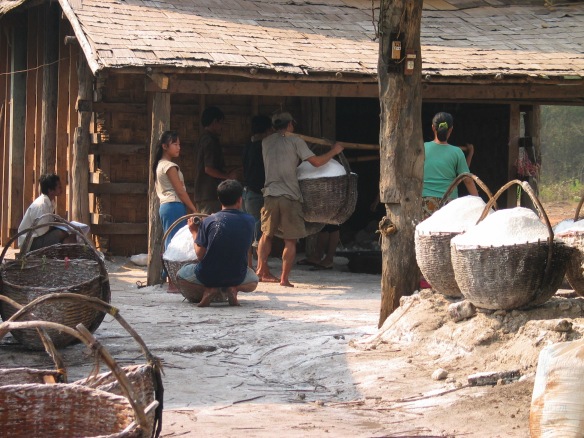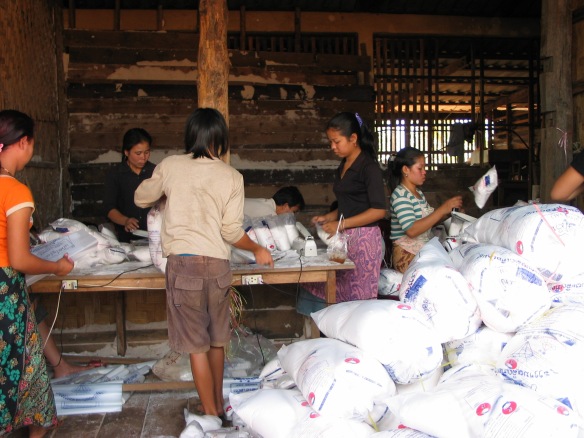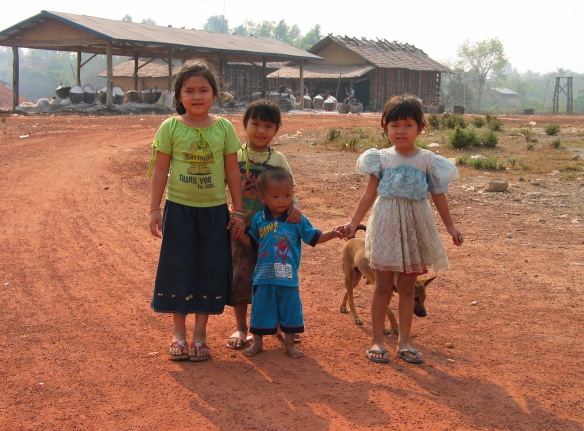I’m reprinting my earlier posts on food banks as a response to the current world crisis brought on by Russia’s invasion of Ukraine. This is Part Two. – Jadi

The first thing I noticed is that the food bank takes up an entire warehouse. Outside the front doors a lovely mural depicts people harvesting a garden for an old-fashioned produce stand. The next wall has a quote from Pablo Neruda.
The reception area has tall walls with high windows, metal filing cases and the ubiquitous, moveable office divider walls. Boxes in the gigantic pantries are stacked impossibly tall, 10-15 palettes high. Signs direct donors to head to Dock 1; at another dock, vans load food to be delivered to distribution centers.

Beverlee moved to Eugene from the Oregon coast where she was one of the humans instrumental in releasing an orca back to the ocean (you know that story as “Free Willie”). She’s always loved community development work.
She says, “In the non-profit world you wear so many hats. You can be responsible for so many things. If I like coming to work, I certainly want my employees to enjoy coming to work… it’s a whole lot easier to manage an organization where folks are happy. It’s great to keep my finger on the pulse.”
Of the staff of 58, thirty-six employees are full time, and six of those are involved in fund raising and marketing. Many of the workers have been with the non-profit for 18-20 years. All are passionately committed to FFLC’s goals.
A typical employee “is a guy who had a really good job, great bennies, and a good salary. But it wasn’t meaningful work. So at a certain age he decided that he needed to change gears and do something more meaningful.
“It’s a paradox sometimes,” Bev says. “We have people working here who need our services. A liveable minimum wage is $15/hour. But all of our full time employees get health care and retirement benefits.”
Entry-level employees usually are young people (frequently part-time), working their way into careers. Other positions are filled by a highly educated group who usually hold graduate degrees and have an interest in non-profit management. Many are Peace Corps veterans or people with experience as volunteers. The 16 men who work in the warehouse are a range of ages, all of them interested in physical labor.
FFLC runs 13 food programs, each with a unique way of distributing food to the hungry. Most of the food bank’s 140 partner organizations are staffed by volunteers.
Bev wanted to know first-hand what it’s like to budget for food on a limited income. “The first thing that happens when people are strapped,” she said, “is they decide not to eat. They want to pay the bills and keep the roof over their heads.” Persons on food stamps provided by the Supplemental Nutritional Assistance Program, or SNAP, feed themselves on what comes to $31.50 a week, or $1.50 a meal. Bev had to think ahead and prepare food all the time to make it work. She realized that “[a] person who has limited access to food by necessity spends a lot of energy trying to figure out how to meet that hunger.”
Former President Donald Trump attempted to cancel SNAP benefits for millions of Americans. [1]
Food For Lane County is Eugene’s most popular non-profit, and she hears stories every day about people who have been touched by their services. Bev volunteers at FFLC’s programs and especially loves FFLC’s restaurant. The Dining Room serves nightly free meals with a piano playing in the room, artwork on the walls, and newspapers to read. The homeless and the hungry are fed with dignity. Bev describes being there as “a Buddhist moment”.
I asked her for any last thoughts. She notes that America has no national discussion about hunger and poverty. People cared when the recession first hit, but events have moved on in terms of dialog or visibility. And in the meantime the problems of hunger and the hungry in the USA have worsened.
Before the afternoon ended I knew I was going to blog about Beverlee and Food For Lane County.

***
FFLC’s vision: To eliminate hunger in Lane County. Their mission: “To alleviate hunger by creating access to food. We accomplish this by soliciting, collecting, rescuing, growing, preparing and packaging food for distribution through a network of social services agencies and programs and through public awareness, education and community advocacy.”
facebook.com/foodforlanecounty. twitter.com/FoodForLC. youtube.com/food4lanecounty. email: info@foodforlanecounty.org
NOTES: *Food insecurity—the condition assessed in the food security survey and represented in USDA food security reports—is a household-level economic and social condition of limited or uncertain access to adequate food. [1] As reported in December 2019, the Trump administration had ‘sought to tighten requirements for food stamps without congressional approval after Congress blocked a Trump-backed effort to pass new restrictions through the Farm Bill last year.’ (Reuters www.reuters.com) I’ve updated the link on food security: USDA Report on Food Security
Watch “A Place at the Table” with Jeff Bridges, about hunger in America. A Place at the Table
The facts in these two posts speak for themselves. The bald reality of hunger in America is outrageous enough, and Putin’s war in Ukraine means that countries around the world face starvation.
Copyright © 2013 Jadi Campbell. Previously published as A Visit to the Food Bank, Part Two. Beverlee Potter has since retired. The amazing work of Food For Lane County continues. To learn more: https://foodforlanecounty.org/
ere for my author page to learn more about me and purchase my books. My main character in Tsunami Cowboys goes to the food bank.




 Author and journalist Mark Kurlansky was born December 7, 1948 in Hartford, Connecticut. He has written about oysters, cod, salt, salmon, milk and paper – among other topics. His writing is engaging and informative. I have copies of Cod: A Biography of the Fish That Changed the World (an international bestseller translated into more than 15 languages) and Salt: A World History. His book
Author and journalist Mark Kurlansky was born December 7, 1948 in Hartford, Connecticut. He has written about oysters, cod, salt, salmon, milk and paper – among other topics. His writing is engaging and informative. I have copies of Cod: A Biography of the Fish That Changed the World (an international bestseller translated into more than 15 languages) and Salt: A World History. His book 












